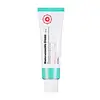What's inside
What's inside
 Key Ingredients
Key Ingredients

 Benefits
Benefits

 Concerns
Concerns

No concerns
 Ingredients Side-by-side
Ingredients Side-by-side

Centella Asiatica Leaf Water
Skin ConditioningWater
Skin ConditioningCyclopentasiloxane
EmollientPropanediol
SolventPhenyl Trimethicone
Skin ConditioningGlycerin
HumectantPEG-10 Dimethicone
Skin ConditioningNiacinamide
SmoothingCyclohexasiloxane
EmollientPanthenol
Skin ConditioningEthoxydiglycol
HumectantDisteardimonium Hectorite
StabilisingSodium Chloride
MaskingRubus Suavissimus Leaf Extract
Skin ConditioningCentella Asiatica Extract
CleansingCaprylyl Glycol
EmollientPinus Densiflora Leaf Extract
AntimicrobialHamamelis Virginiana Leaf Extract
Skin ConditioningDimethicone Crosspolymer
Emulsion StabilisingCamellia Sinensis Leaf Extract
AntimicrobialButylene Glycol
HumectantMadecassoside
AntioxidantPentylene Glycol
Skin ConditioningCaprylhydroxamic Acid
Adenosine
Skin ConditioningLactic Acid
BufferingSodium Lactate
BufferingUrea
BufferingSerine
MaskingDisodium EDTA
Sorbitol
HumectantCitrus Grandis Peel Oil
MaskingAsiaticoside
AntioxidantCitrus Limon Peel Oil
MaskingPelargonium Graveolens Flower Oil
MaskingLavandula Hybrida Oil
EmollientJuniperus Mexicana Oil
MaskingCitrus Nobilis Peel Oil
MaskingAllantoin
Skin ConditioningChlorphenesin
AntimicrobialPhenoxyethanol
PreservativeCentella Asiatica Leaf Water, Water, Cyclopentasiloxane, Propanediol, Phenyl Trimethicone, Glycerin, PEG-10 Dimethicone, Niacinamide, Cyclohexasiloxane, Panthenol, Ethoxydiglycol, Disteardimonium Hectorite, Sodium Chloride, Rubus Suavissimus Leaf Extract, Centella Asiatica Extract, Caprylyl Glycol, Pinus Densiflora Leaf Extract, Hamamelis Virginiana Leaf Extract, Dimethicone Crosspolymer, Camellia Sinensis Leaf Extract, Butylene Glycol, Madecassoside, Pentylene Glycol, Caprylhydroxamic Acid, Adenosine, Lactic Acid, Sodium Lactate, Urea, Serine, Disodium EDTA, Sorbitol, Citrus Grandis Peel Oil, Asiaticoside, Citrus Limon Peel Oil, Pelargonium Graveolens Flower Oil, Lavandula Hybrida Oil, Juniperus Mexicana Oil, Citrus Nobilis Peel Oil, Allantoin, Chlorphenesin, Phenoxyethanol
Water
Skin ConditioningDicaprylyl Ether
EmollientGlycerin
HumectantDiglycerin
HumectantSqualane
Emollient1,2-Hexanediol
Skin ConditioningInulin
Skin ConditioningSodium Polyacryloyldimethyl Taurate
Emulsion StabilisingAcrylates/C10-30 Alkyl Acrylate Crosspolymer
Emulsion StabilisingPanthenol
Skin ConditioningXanthan Gum
EmulsifyingSodium Hyaluronate
HumectantSodium Hydroxide
BufferingCopper Gluconate
Skin ConditioningCentella Asiatica Leaf Extract
Skin ConditioningZinc Gluconate
Skin ConditioningCitric Acid
BufferingTocopherol
AntioxidantWater, Dicaprylyl Ether, Glycerin, Diglycerin, Squalane, 1,2-Hexanediol, Inulin, Sodium Polyacryloyldimethyl Taurate, Acrylates/C10-30 Alkyl Acrylate Crosspolymer, Panthenol, Xanthan Gum, Sodium Hyaluronate, Sodium Hydroxide, Copper Gluconate, Centella Asiatica Leaf Extract, Zinc Gluconate, Citric Acid, Tocopherol
 Reviews
Reviews

Ingredients Explained
These ingredients are found in both products.
Ingredients higher up in an ingredient list are typically present in a larger amount.
Glycerin is already naturally found in your skin. It helps moisturize and protect your skin.
A study from 2016 found glycerin to be more effective as a humectant than AHAs and hyaluronic acid.
As a humectant, it helps the skin stay hydrated by pulling moisture to your skin. The low molecular weight of glycerin allows it to pull moisture into the deeper layers of your skin.
Hydrated skin improves your skin barrier; Your skin barrier helps protect against irritants and bacteria.
Glycerin has also been found to have antimicrobial and antiviral properties. Due to these properties, glycerin is often used in wound and burn treatments.
In cosmetics, glycerin is usually derived from plants such as soybean or palm. However, it can also be sourced from animals, such as tallow or animal fat.
This ingredient is organic, colorless, odorless, and non-toxic.
Glycerin is the name for this ingredient in American English. British English uses Glycerol/Glycerine.
Learn more about GlycerinPanthenol is a common ingredient that helps hydrate and soothe the skin. It is found naturally in our skin and hair.
There are two forms of panthenol: D and L.
D-panthenol is also known as dexpanthenol. Most cosmetics use dexpanthenol or a mixture of D and L-panthenol.
Panthenol is famous due to its ability to go deeper into the skin's layers. Using this ingredient has numerous pros (and no cons):
Like hyaluronic acid, panthenol is a humectant. Humectants are able to bind and hold large amounts of water to keep skin hydrated.
This ingredient works well for wound healing. It works by increasing tissue in the wound and helps close open wounds.
Once oxidized, panthenol converts to pantothenic acid. Panthothenic acid is found in all living cells.
This ingredient is also referred to as pro-vitamin B5.
Learn more about PanthenolWater. It's the most common cosmetic ingredient of all. You'll usually see it at the top of ingredient lists, meaning that it makes up the largest part of the product.
So why is it so popular? Water most often acts as a solvent - this means that it helps dissolve other ingredients into the formulation.
You'll also recognize water as that liquid we all need to stay alive. If you see this, drink a glass of water. Stay hydrated!
Learn more about Water